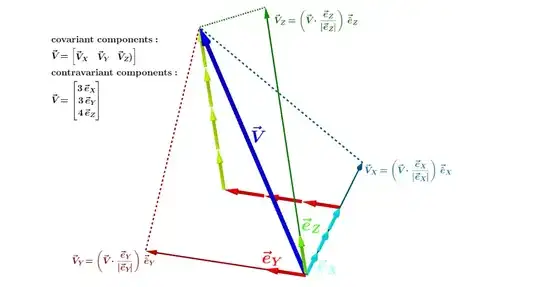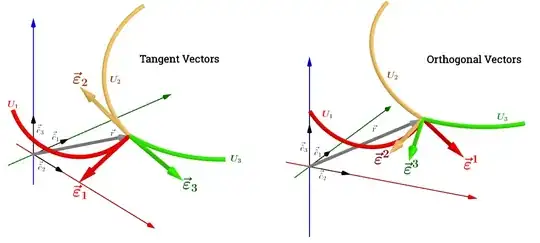This youtube video by Eugene Khutoryansky makes the distinction clear between the covariant coordinates of a vector (dot product of the vector with each of the basis vectors or vector projection), and the contravariant coordinates (parallelogram law):
Is there a way you could explain to a lay person that this somehow underpins the following fact:
Covariant vectors are representable as row vectors. Contravariant vectors are representable as column vectors.
?
I would like to know, for example, if the idea carries beyond being able to calculate the length of a vector in non-Cartesian coordinates as the dot product of its covariant and contr$avariant expressions:
$$ \lVert V\rVert ^2=\begin{bmatrix} V_X & V_Y & V_Z\end{bmatrix}\cdot \begin{bmatrix} V^X \\ V^Y\\ V^Z\end{bmatrix}.$$
In a curvilinear system presumably the contravariant basis vectors would be tangential, whereas the covariant basis vectors would be orthogonal to the coordinates:
Apropos of the first comment, and if it can be confirmed (as a bonus), covariant vectors are covectors or dual vectors, while contravariant vectors are just vectors.


To be fair, I have read Ricci's original paper on tensor calculus and even there it wasn't clear why on Earth the vectors are the "contravariant" vectors and the dual vectors the "covariant ones", because by the logic of the paper it should be the other way around. Which is consistent with category theory too!
– Bence Racskó Jul 29 '17 at 20:57